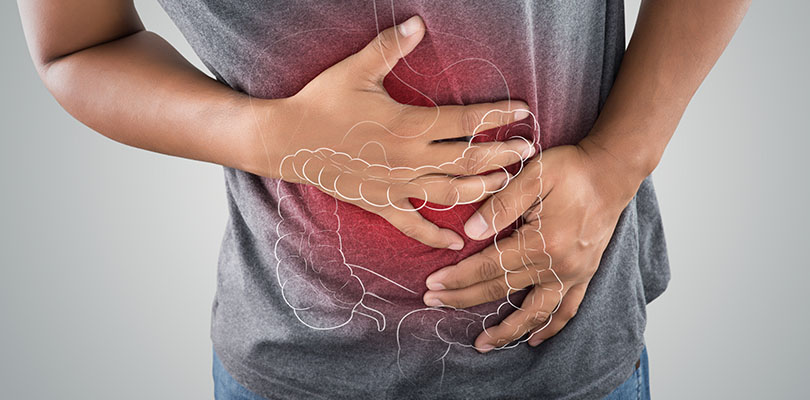All You Need to Know About Porphyria Symptoms
Porphyria is not actually a single condition but rather a group of medical conditions in which there is a build-up of porphyrin in the body. While your body requires porphyrins, too much of it can cause a variety of health concerns. There are two types of porphyria: acute and cutaneous. They each pose their own risks and come with their own list of porphyria symptoms.
Acute Porphyria
Acute Porphyria impacts the nervous system. The symptoms associated with this condition can show up relatively quickly and lead to serious health implications. That is why it is incredibly important to seek medical care as soon as possible. Common symptoms associated with acute porphyria include:
- Stomach pain
- Severe pain in legs or lower back
- High blood pressure
- Rapid heartbeat
- Diarrhea
- Nausea
- Anxiety
- Confusion
- Red or brown urine
- Breathing issues
- Seizures
- Heart palpitations
Cutaneous Porphyria
Cutaneous porphyria does not usually impact the nervous system, but it does cause skin issues when exposed to light. Common symptoms include:
- Itching
- Changes in skin texture or appearance
- Burning
- Red or brown urine
- Blisters
- Sudden redness
- Pigment changes
- Sensitivity to the sun
While most porphyria can be classified in these categories, some forms impact both the skin and the nervous system simultaneously.
What are the Causes?
Research indicates that all types of porphyria originate with an issue in the production of heme. Heme is a part of hemoglobin that carries oxygen from your lungs to other parts of your body. Because the heme is created in the bone marrow and liver using eight different enzymes, the deficiency of a particular enzyme will determine if the porphyria is acute or cutaneous.
Unfortunately, most forms of porphyria are caused by a genetic factor, meaning that it is an inherited condition. However, just because you receive the genes for porphyria does not necessarily mean you will experience symptoms. However, another form of porphyria, PCT, may be acquired or inherited.
What are the Triggers?
While you may not be able to control whether you have porphyria, certain triggers may make it more likely that you will have symptoms. Some triggers include:
- High levels of iron
- Estrogen medication
- Smoking
- Alcohol use
Any of these things can impact the body’s ability to perform properly and can lead to signs and symptoms of porphyria.
In addition to these triggers, other risk factors may make porphyria symptoms more prominent. Some of the risk factors include:
- Stress
- Exposure to sunlight
- Dieting
- Recreational drug use
- Medications
- Menstruation hormones
Fragile X syndrome triggers a wide array of development issues, including intellectual impairment, hyperactive behavior, learning disabilities, and autism.
Treatment Options
Fortunately, there are treatment options based on the type of porphyria that you have. Of course, you should do your best to avoid triggers and risk factors, but there are other ways that you can protect yourself from allowing this condition to become severe.
Acute Porphyria Treatment
In the event that you have acute porphyria, you may have to inject hemin in order to limit the body’s unnecessary production of porphyrins. You may also have to take intravenous sugar so that you have the proper level of carbohydrates in your system. Finally, if none of this works, then you may have to be hospitalized to treat some of the symptoms that become severe, such as breathing problems or complications that lead to dehydration.
Cutaneous Porphyria Treatment
If you have cutaneous porphyria, you may have to have your blood drawn occasionally so that the level of porphyrins in your body is reduced. You may even have to take malaria medications as they can also work to absorb high levels of porphyrins from your system. Because you will spend a considerable amount of time avoiding sunlight, you may also be required to take a vitamin D supplement to avoid deficiencies.
Other Considerations
Keep in mind, much of this disease can be managed. You may have to make lifestyle changes and regularly consult with your doctor to ensure that you are on the right treatment plan. In some instances, you may want to wear a medical alert bracelet that informs the medical staff of your condition so that you receive proper care in the event of an emergency. Small adjustments such as not drinking or smoking, eating a balanced diet and continuing a regular exercise routine can go a long way to protecting your health.
Because this is a chronic condition, you may also need additional physical and emotional support. Ask your doctor about support options that are near you.
Overview
If you have any of the above symptoms, know that you are not alone. There are many resources and treatment options that may be available to you. To learn if you have this condition, schedule a consultation with your doctor right away. The first step to creating a quality treatment plan is proper diagnosis. It is important to remember that this is manageable, and you can take control of your health and life.







